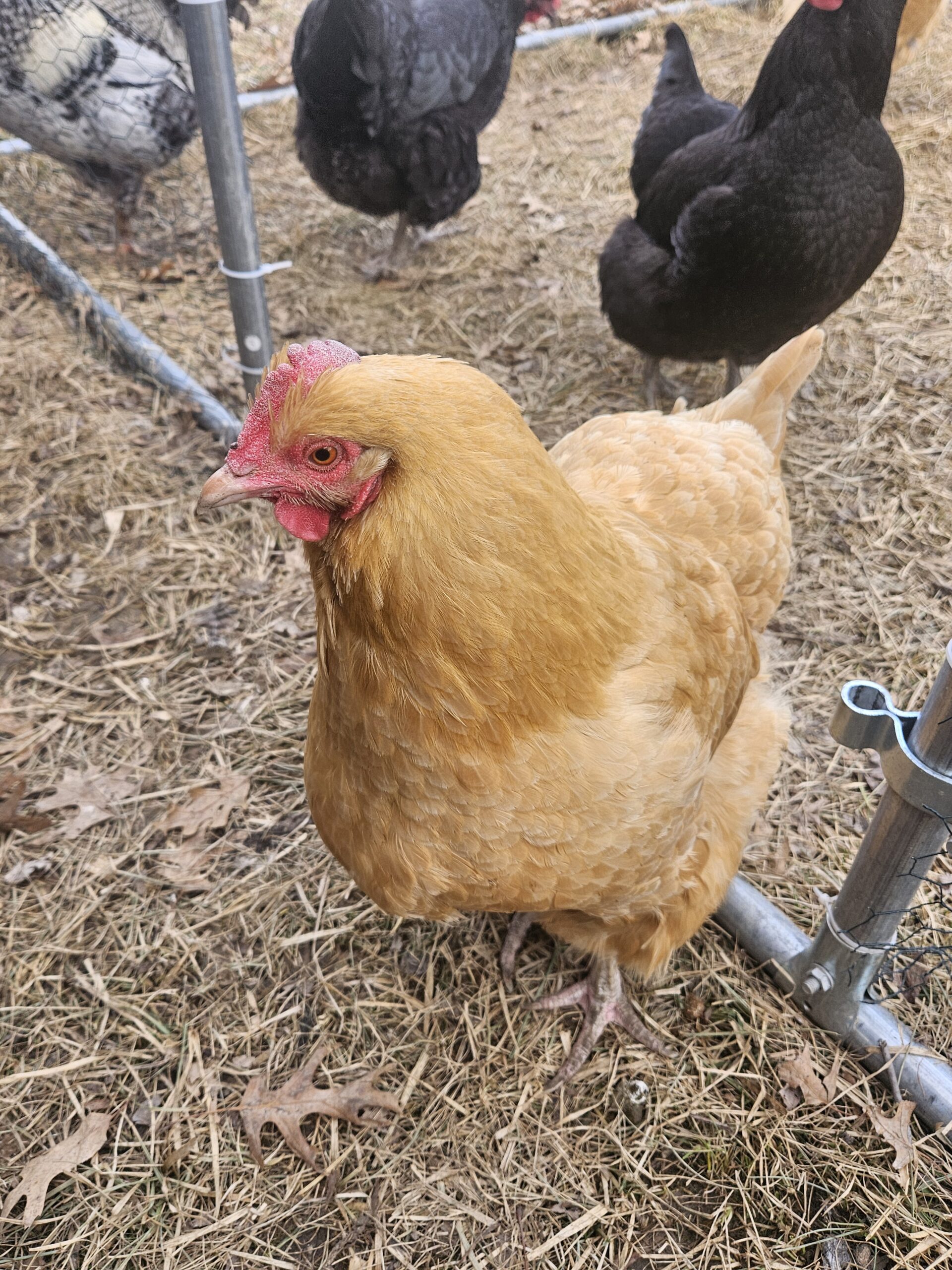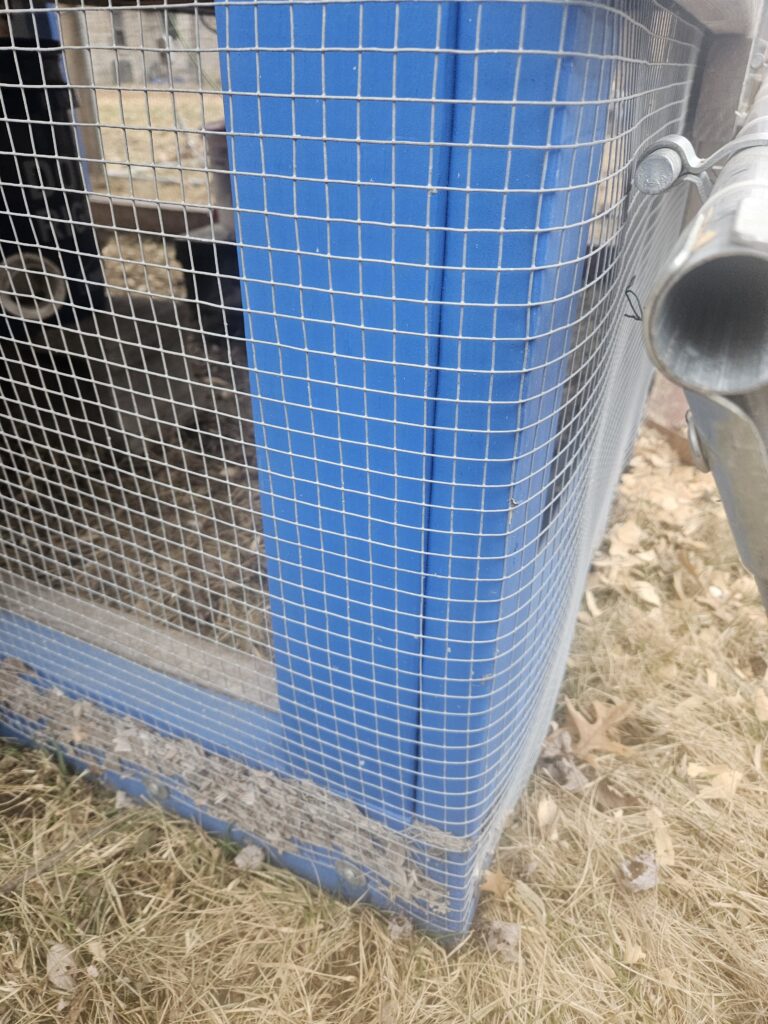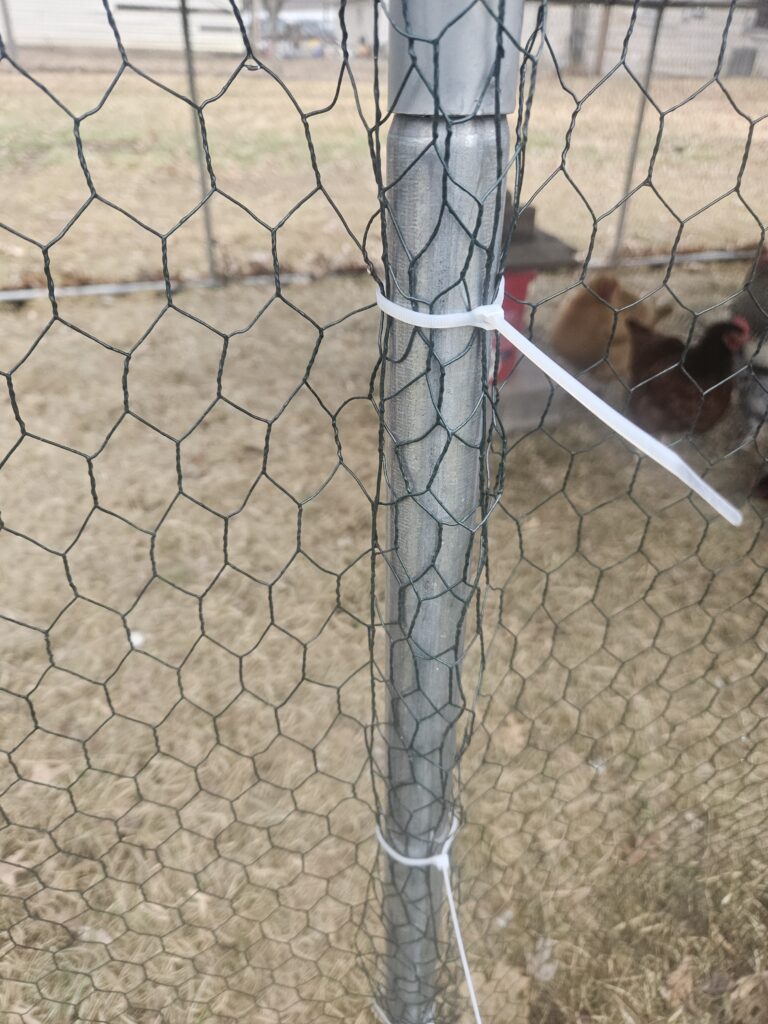Hey, where did our new little Rhode Island Red go? I don’t see her anywhere…
That is what my wife was asking me one night after we had been letting the new “teenage” chicks free range in our backyard with our older hens.
When we went back outside all of the chickens were up near the house and that chicken was nowhere to be found. There wasnt even a stray feather to be found where they had been earlier.
The best we could figure was that a fox had managed to sneak his way through the neighborhood and snatch her up.
Other than giving your chickens food, water, and a clean house the next most important is keeping them safe from other animals.
This will naturally start with a secure, predator-proof coop. We have 10 good tips to accomplish this while hopefully being affordable.
Predator proofing is essential!
Even the most urban areas have the possibility of having something that wants to eat your chickens, their food, or both.
Also it’s very possible that your area might not have many predators now, but after those predators realize there’s a food source for them (your chickens!) in the area they will start moving in and taking an interest.
We were lucky enough to lose only one in our chicken-keeping time, but if we didn’t keep an eye on them I’m sure they would all be in peril. We even live in a city and still have to contend with predators. Here are some common animals in the city and suburban setting we deal with on a daily basis:
- Foxes
- Birds of Prey (Hawks, Eagles, Falcons, Owls)
- Look into your insights to see when your audience is active on Instagram
- Raccoons
- Rats
- Dogs
- Cats
- Coyotes
If you live farther out in the country you will most likely have to deal with all of those plus even more wild possibilities!
- Bobcats
- Bears
- Wolves
- Mountain Lions
- Ermine or Mink
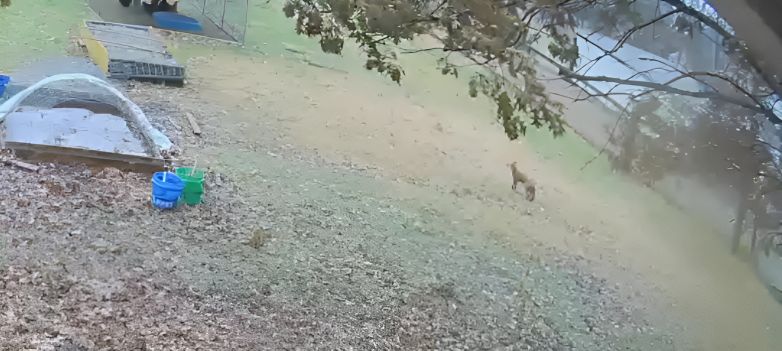
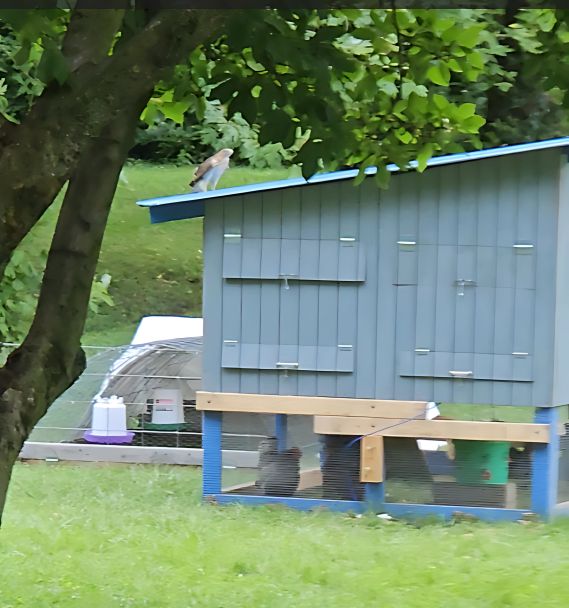
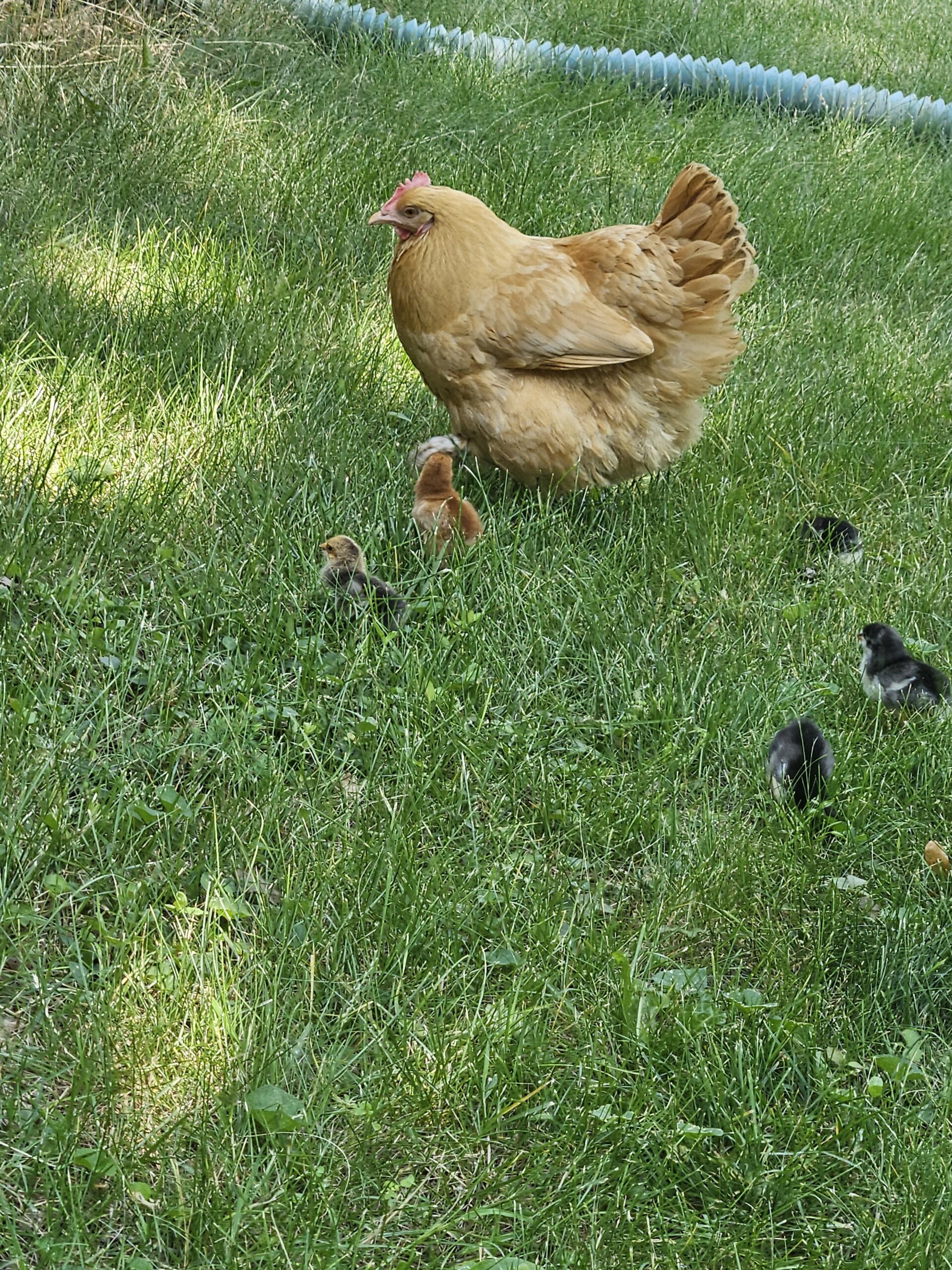
Key Features of a Predator-Proof Coop
Obviously the bigger the predator, the stronger protection you will need. I would definitely recommend something made out of some solid wood and hardware cloth.
Something that provides some overhead protection will usually be necessary too.
Here are some of the types of fencing you may see in stores:
- Poultry Netting or Chicken Wire
- Hardware Cloth (don’t ask me why it’s called that)
- Welded Wire fencing (not as strong as it looks)
- Cattle (fence) Panel
I consider chicken wire only good at keeping chickens in and not keeping predators out. Although the chickens may have a hard time seeing it at first, once they realize and learn that it’s there they shouldn’t have a problem.
We use it for our larger “run” area to keep them from wandering too far and protected from hawks or other stray animals during the day.
For night time protection we wrapped the actual coop area with hardware cloth and that has kept our chickens safe from all of the urban predators I listed above.
Even with that protection, making sure the coop door is closed up at night is mandatory. All doors and windows need a secure latches at least and we have stapled in hardware cloth into the windows openings as well.
In addition to all that, building the actual coop sleeping area so it is up off of the ground is generally a good idea to make it harder to animals to get into. If digging and burrowing animals are a distinct problem then some kind of buried fence or metal skirt around the coop will be needed.
Tip #1: Mark your territory
I know it may sound a little odd, but you can deter other animals if you spread a human scent around your chicken coop. The two easiest ways to spread your scent around are probably throwing out any old hair clippings around the outside of your chicken coop or possibly wearing an old t shirt (or even underwear!) and just leaving it up against the outside of your chicken coop.
Spread your “human smell” around to let other animals to stay away.
I know it may sound crazy, but using your own urine outside around your chicken coop would probably have the biggest deterrance factor especially for smaller animals. This obviously isn’t for everyone and I personally have only done it a handful of times, but it is a free way to add a little deterrence to animals. Although the truly big, wild animals like bears and mountain lions probably won’t be deterred nearly as much.
Tip #2: Put ’em on lockdown
As I mentioned above, making sure the coop is closed up for the night is one of the most important things you need to do. The chickens will of course head to their roost around dusk and before it’s completely dark because they have a hard time seeing in the dark.
This is such an important step because just like Minecraft all the monsters come out at night. A lot of predators have learned and evolved to hunt at night. I tend to get a little paranoid about making sure they are okay at night sometimes because I know all it could take is just one time leaving access for a racoon or something else to get into the coop and then we would be having a very upsetting morning.
just like Minecraft all the monsters come out at night
If you can’t manage to open and close the door at dawn and dusk I would suggest in investing in an automatic coop door. Then if you position a light or even a camera to see the door you don’t even have to leave your house to see that the door is closed and secured.
Tip #3: Bury wire around the perimeter to prevent digging
Raccoons, foxes, and coyotes will all dig their way into a chicken coop if given the chance. Other animals like ermine or snakes could find their way in from underneath too. This is why it could be important to actually bury a “skirt” around your coop so that if anything does try to dig under the edge then it will hit a wire or wood barrier.
It’s suggested to bury the perimeter edging about 12 inches deep. Ideally this would be a piece of hardware cloth, but any scrap piece of wood or even wire shelving would make a good barrier.
We personally have not had any problems with animals trying to dig under our coop and we try to move our coop around so we don’t have anything buried. If you’re not sure if something will dig under your coop then you can put down something cheap and lightweight and keep an eye on it to make sure nothing is disturbing it.
Tip #4: Raise the roof
Another simple and fairly cheap deterrent to keep your chickens safer is to get it up off of the ground. Many animals such as rats, snakes, and skunks will be able to get in to the coop easier if the coop is right at their level.
Getting the coop up off of the ground does kind of require there to be a floor for it, which there should really be anyway. Although getting some solid plywood or similar can be a little expensive, actually getting it up off the ground could simply be done with some cinder blocks or bricks. Even scrap pieces of wood could be used assuming they are made to be more or less level.
Tip #5: Light it up
One tactic we have not used yet but I really like the idea of is using a simple motion activated solar light. Most night time animals would rather not hang around in the light.
A inexpensive motion detector light that has a battery and is solar powered would make an easy addition as a further deterrent for animals.
Tip #6: Keep a guard dog
The sixth tip is simply to keep a dog hanging around the chicken coop. Obviously don’t let the dog so close that the chickens are stressed by the dog, but having a dog smell will deter some of the more common animals. If your dog is on the smaller side obviously be careful about letting it out at night and having it be attacked itself.

Another option if your city or jurisdication allows it might be to have a rooster. A rooster can be noisier than hens, but can also deter and try to fight any animals that enter their coop.
Tip #7: Create an outside perimeter fence
Creating an outside secondary fence around your chickens area will help keep animals out too of course. The problem of course is fencing can get pricey quickly. The simplest solution to this is to use pallets, the pallet wood, or other repurposed materials.
If you don’t care much about looks you can just the whole pallet and not worry about having to break them down. Of course using whole pallets will still take up a lot of space. The usual pallet is 4 feet long so if you had an area that was 20 feet by 32 feet it would take 26 pallets.
Tip #8: Secure any gaps
The last easy and cheap strategy to keep your chickens safe is to make sure any possible gaps are sealed up tight and to continue monitoring for activity at night around your coop. Use hardware cloth to cover any open windows in the coop and use a staple gun to secure it firmly.
The way we like to secure the hardware cloth in other places with pan head screws and/or fender washers. If you need to secure some cattle panel then we’ve used galvanized plumbing pipe strapping to hold it down also.

